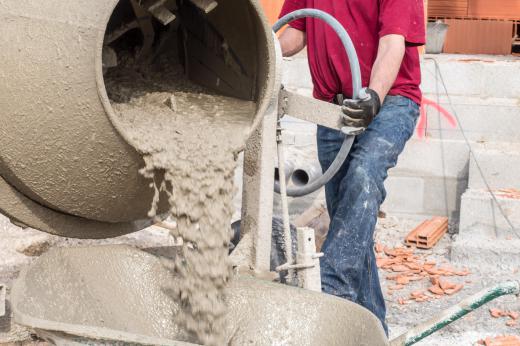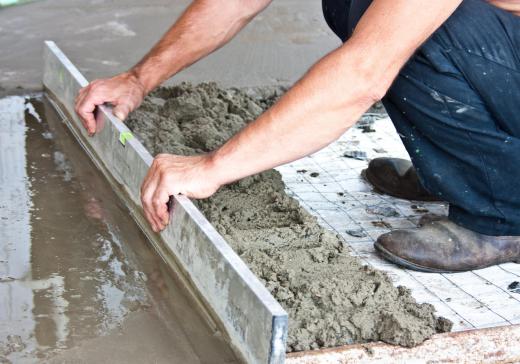Lightweight concrete, similar to normal weight concrete, is a mixture of water, Portland cement or Ordinary Portland Cement (OPC), and aggregate. It is classified as structural or nonstructural concrete depending on strength and compression rating, generally determined by the type of aggregate material used in the concrete mix. Lightweight aggregate concrete uses a variety of aggregates with lower density than normal weight concrete.
Structural concrete, whether an approved lightweight or a normal weight concrete, is used for applications calling for a high level of strength and compression rating. These might be highway overpasses, bridges, high-rise buildings, and construction in areas prone to earthquakes. Advantages of structural lightweight aggregate concrete with a correspondingly reduced weight load include reduced dead loads, or weight of the structures it's used to build, and more efficient transport.

While not approved for many structural applications, nonstructural lightweight concrete is used where normal or a more dense structural lightweight mix would be impractical. Roof tiles made of lightweight concrete are lighter and require less robust truss systems. The combination of strength, weather resistance, and reduced weight often makes lightweight aggregate concrete mix and lightweight blocks a good choice for non-traditional residential buildings.

Aggregates used to make lightweight aggregate concrete vary. Expanded shale, slate, and clay, often fired in a kiln to increase porosity, are among aggregates used for structural lightweight concrete. Other porous material, such as air-cooled blast furnace slag, is often used.
Insulation is often a factor in selecting an aggregate for nonstructural lightweight concrete. A lightweight aerated concrete may be used to make both lightweight panels and lightweight blocks suitable for a variety of construction, including some foundation stem walls. Lightweight aerated concrete may be made in a variety of ways, such as forcing air into a slurry of OPC and a porous material, or by using a stable foam product as an aggregate.
Perlite and vermiculite are natural minerals that, when heat-treated, can be mixed with OPS to produce a nonstructural lightweight aggregate concrete. The product is often used for decorative concrete treatments, roof tiles, and other lightweight applications. This lightweight concrete is often used in jobs requiring insulation from heat and sound.
Structural lightweight aggregate concrete might typically require a density or unit weight of 90 to 115 lb/ft³ or (1440 to 1840 kg/m³) and a compression rating of 2500 psi or (1700 MPa), which is about 65% of the density or unit weight of normal concrete. Nonstructural lightweight concrete might have a density or unit weight as low as 35 lb/ft³ or (561 kg/m³). When considering lightweight concrete for a construction job, it is generally a good practice to consult a qualified engineer or architect for specifications.
